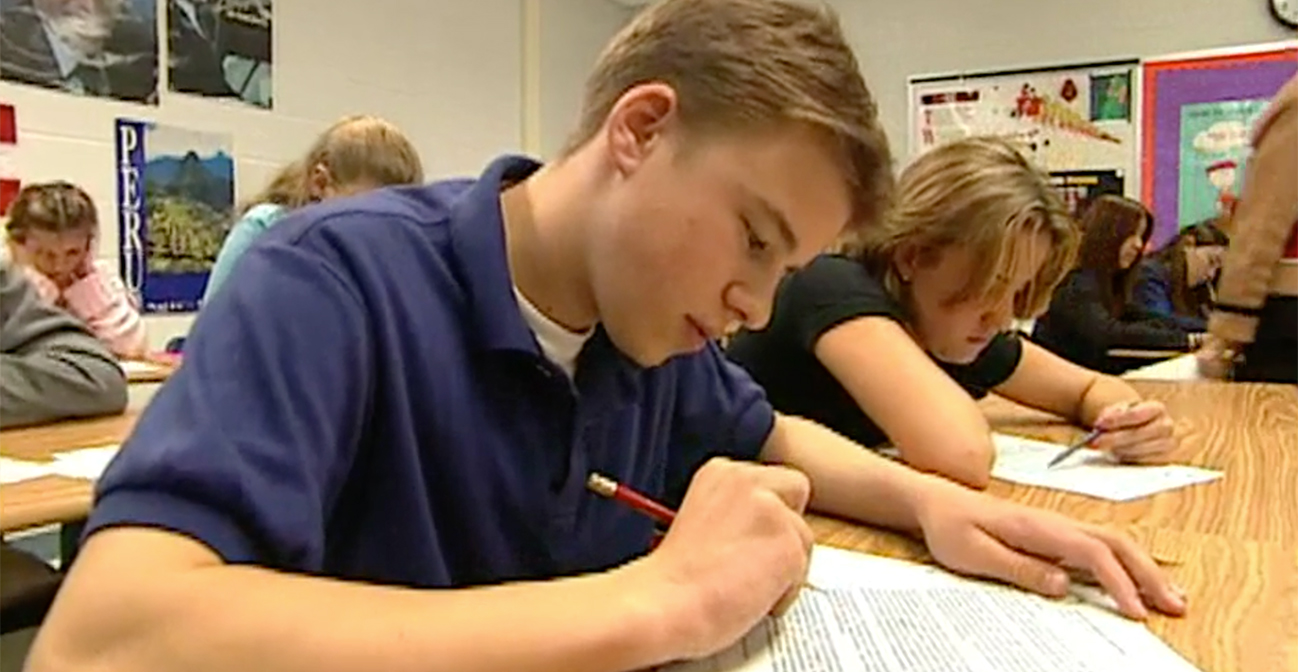Join us for conversations that inspire, recognize, and encourage innovation and best practices in the education profession.
Available on Apple Podcasts, Spotify, Google Podcasts, and more.

CLASSROOM AT A GLANCE
Teacher
Fran Pettigrew
Language
Spanish III
Grades
11
School
McLean High School, McLean, Virginia
Lesson Date
March 20
Class Size
30
Schedule
Block schedule, 90+ minutes every other day
In this lesson, students learn to communicate about vacations. They work individually and in pairs to express their personal travel interests, and read a letter from a Chilean teacher requesting travel advice for her students. Working in groups, they identify places for the Chilean students to visit in the United States.
Communication: Interpersonal, Interpretive, Presentational
Connections: Making Connections
authentic materials
Authentic materials are resources that have been developed specifically for native speakers. These include print, audio, and visual materials.
native speaker
A native speaker considers the target language to be his or her first language. Teachers seek opportunities for students to communicate in person or through technology with native speakers. Students in foreign language classes who are first- or second-generation immigrants and who use the language extensively outside the classroom are also considered native speakers. These students typically maintain the cultural norms of their heritage in certain situations. See also heritage speaker.
negotiation of meaning
In this process, teachers and students try to convey information to one another and reach mutual comprehension through restating, clarifying, and confirming information. The teacher may help students get started or work through a stumbling block using linguistic and other approaches.
proficiency level
Proficiency describes how well a person functions in a language. The American Council on the Teaching of Foreign Languages further defines proficiency with a set of guidelines for assessing communicative abilities. The guidelines cover how an individual performs across three criteria: function, content/context, and accuracy. When combined, these criteria determine the student’s communicative ability to be Novice, Intermediate, Advanced, or Superior. See also performance level.
thematic units
Thematic units are designed using content as the organizing principle. Vocabulary, structures, and cultural information are included as they relate to the themes in each unit. For an excellent example of theme-based units, see the Nebraska Foreign Language Education Web site in General Resources.
Reflect on Your Practice
As you reflect on these questions, write down your responses or discuss them as a group.
Watch Other Videos
Watch other videos in the Teaching Foreign Languages K-12 library for more examples of teaching methodologies like those you’ve just seen. Note: All videos in this series are subtitled in English.
Comparing Communities (French) illustrates the integration of the three modes of communication, and Promoting Attractions of Japan (Japanese) shows students preparing to advise travelers about tourist sites in Japan.
Put It Into Practice
Try these ideas in your classroom. Where it’s not already evident, reflect on how to adapt an idea that targets one performance range for application to other performance ranges.
World-Readiness Standards for Learning Languages
The World-Readiness Standards for Learning Languages create a roadmap to guide learners to develop competence to communicate effectively and interact with cultural understanding. This lesson correlates to the following Standards:
Interpersonal Communication
Interpretive Communication
Presentational Communication
Making Connections
Lesson Materials
Florida Worksheet: Student Work (PDF, 78 K)
A sample worksheet completed by a student during the group activity (Includes English translation)
Letter Writing Task (PDF, 14 K)
Performance prompts that students used to write their final letters
Curriculum References
Virginia Standards of Learning (SOL) and Testing for Foreign Language
Fairfax County Program of Study
ACTFL Performance Descriptors for Language Learners
Fran Pettigrew’s Additional Resources
Web Resources:
USA Tourist.com
Travel news and tourist information for U.S. destinations (available in English, French, German, and Spanish). Note: Ms. Pettigrew and her students used this site to research information about travel destinations for this lesson.
Yahoo in Spanish
The Spanish-language version of the popular search engine